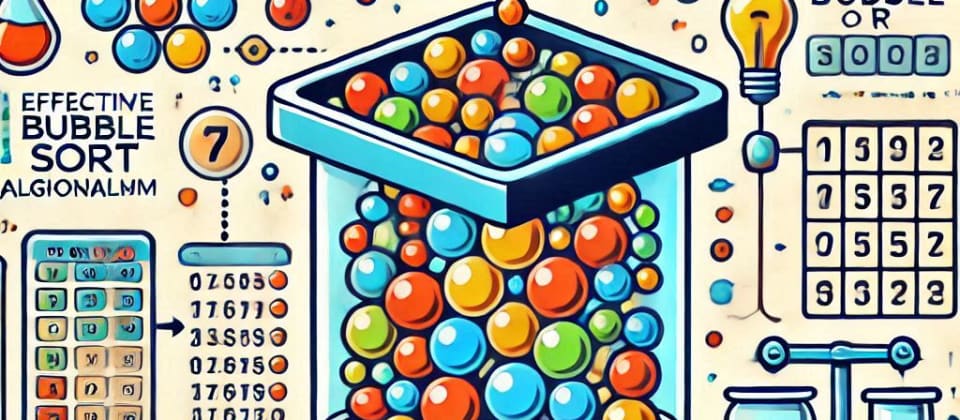
Problem on Bubble Sort
Problem Statement: Sort Colors using Bubble Sort
Description:
Given an array nums with n objects colored red, white, or blue, sort them in-place so that objects of the same color are adjacent, with the colors in the order red, white, and blue.
We will use the integers 0, 1, and 2 to represent the color red, white, and blue, respectively.
You must solve this problem using Bubble Sort.
some companies that have asked the "Sort Colors" problem in their interviews-
- Amazon
- Microsoft
Example 1:
Input: nums = [2,0,2,1,1,0]
Output = [0,0,1,1,2,2]
Example 2:
Input: nums = [2,0,1]
Output = [0,1,2]
Constraints
n == nums.length1 <= n <= 300nums[i]is either0,1, or2.
Output Format
Return a integer array
Now try it yourself
.
.
.
.
.
.
.
.
.
.
.
.
Solution in C:
#include<stdio.h>
#include<stdlib.h>
int* sortColors(int* nums, int n){
for(int i=0; i<n-1; i++){
for(int j=0; j<n-1-i; j++){
if(nums[j+1] < nums[j]){
int temp = nums[j];
nums[j] = nums[j+1];
nums[j+1] = temp;
}
}
}
return nums;
}
void m1(){
int nums[6] = {2,0,2,1,1,0};
int n = 6;
int* result = sortColors(nums,n);
}
Solution in JAVA:
class Solution{
public int[] sortColors(int[] nums){
int n = nums.length;
for(int i=0; i<n-1; i++){
for(int j=0; j<n-1-i; j++){
if(nums[j+1]<nums[j]){
int temp = nums[j];
nums[j] = nums[j+1];
nums[j+1] = temp;
}
}
}
return nums;
}
public static main(String[] args){
int nums = {2,0,2,1,1,0};
Solution solve = new Solution();
int[] result = solve.sortColors(nums);
}
}
Solution in C++:
#include<bits/stdc++.h>
using namespace std;
void sort_colors(int nums[],int n){
for(int i=0;i<n-1;i++){
for(int j=0;j<n-1-i;j++){
if(nums[j]>nums[j+1]){
int temp=nums[j];
nums[j]=nums[j+1];
nums[j+1]=temp;
}
}
}
}
int main(){
int nums[]={2,0,2,1,1,0};
sort_colors(nums,6); //6 is the size of array
cout<<"result is"<<endl;
for(int i=0;i<6;i++)
cout<<nums[i]<<" ";
}
Time Complexity: O(n^2)
Space Complexity: O(1)
Explanation:
-
Initializes an array
numswith the values [2, 0, 2, 1, 1, 0]. -
Then calls the
sortColorsmethod and stores the sorted array in the variableresult. -
The length of the array
numsis stored in the variablen. -
The outer loop runs from
0 to n-2, indicating the number of passes required to sort the array. -
The inner loop runs from
0 to n-2-i. With each pass of the outer loop, the range of the inner loop decreases by one, because the largest element gets placed in its correct position. -
Adjacent elements are compared, If
nums[j+1]is less thannums[j], they are swapped to place the smaller element before the larger one. -
After the loops complete, the sorted array
numsis returned.
Follow Up Question: Without bubble sort Can you reduce the time complexity of this function
.
.
.
.
Hint : Count the Occurence using mapping.
Try it Yourself...
Concept of Bubble Sort Click here.
For more interview problems Click here.
Happy Coding!
8 Reactions
0 Bookmarks
